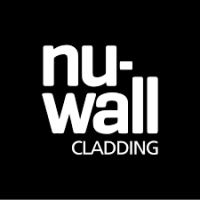What is a 'Building Inspector'?
‘Building Inspector’ was commonly used in the past to describe any person who carried out inspections of buildings for various reasons, including pre-purchase inspections and inspections of building works by Council to check off compliance with a building permit or a building consent. Territorial Authorities currently employ building inspectors to undertake inspections of building work for their Building Control Units, as part of the Building Consent Authority’s function to sign off on building consents.
Construction professionals who carry out inspections of buildings are now described as building surveyors who, depending upon their experience and qualifications, may perform a wide range of inspections, property assessments and reporting for residential, institutional and commercial clients. There are many more types of inspections that building surveyors carry out, such as for commercial due diligence, defects analysis, expert witness purposes, long term maintenance planning, as well as for pre-purchase and general condition purposes. NZIBS Registered Building Surveyors are trained and experienced building surveyors – see About Us and Find a Member
PPI Pre-Purchase Inspection: What does an inspection include?
Sometimes referred to as a building survey, the inspection generally includes a visual examination of the building and its systems from top to bottom. It can also include the entire property including such items as the grounds, outbuildings and fencing. The surveyor evaluates and reports on the construction and condition of what can be seen of the structure, roof, foundation, plumbing, drainage, heating system, insulation, walls, windows, doors and such-like.
Only those parts that are visible and readily, and safely accessible are included in the report. Most surveyors use non-invasive equipment such as a capacitance meter or a thermal imaging camera. These may find problems which are hidden from the naked eye, however all such tools have limitations. The survey if so requested can also include a review of a Council file to provide historic information, in addition to what is obtained from the inspection (refer to the section headed “What is a LIM” below).
What is a LIM (Land Information Memorandum)?
Each city or district council holds a considerable amount of information about each property in its area. For a fee (which varies), they will print out some of this information from their files. If there are any problems or unusual and important features, these should show up. For instance, the LIM might reveal the property is subject to flooding, or contains a council drain which may not be built over, or a protected tree or building. It should also help you to figure out how the district plan applies to the site.
Sometimes the council will also supply pages of area plans showing the known stormwater and sewage drains, planning, zoning and other details. The LIM will also identify whether building consents have been taken out for building work and whether Code Compliance Certificates have been issued for that work. If the house has at any stage been accepted by the Weathertight Homes Tribunal as being an “eligible” claim, this should also be on the LIM.
For the surveyor doing a pre-purchase survey, it is the list of building permits and/or building consents that is often most relevant. This is because the council only has records of the building works it knows about. Frequently alterations have been done to older houses, including landscaping, without council knowledge, so nothing shows up on the LIM. This means a LIM that shows no problems could be misunderstood, if it is interpreted to mean no unconsented works have been carried out. If you choose to give the surveyor a copy of the plans on file before (s)he goes to site, the surveyor can be directed to assess any differences and report accordingly.
Why should I look at the Property File?
An increasing number of Councils now make most if not all their property file information available for on line viewing (for a fee) and the Councils which offer this service will also generally send a copy on CD. You can also visit the council offices and look at the property file over the counter for yourself (for a fee). The full file will provide a great deal more information than is contained in the “Land Information Memorandum” (LIM). For example, notes taken by building inspectors during inspections while the work is under construction can be informative.
If the building was completed recently, you will hopefully find records of who did the work and you may decide to contact these individual tradesmen to get their views on how the job was handled. If you want a more detailed understanding of the information in the property file, get the information to the surveyor before the survey and request a section in the report covering what you specifically want to know about. For example, if an architect or other professional observed the building work during construction.
What is a CCC (Code (or consent) Compliance Certificate}?
It is invariably a single A4 sized page – for each consent issued. Sometimes several consents may have been issued for the same house, for example if alterations have been carried out. For units in multi unit developments, the works may have been consented in two or more stages, each such stage should have a CCC. (It is unlikely each unit will have its own separate consent/CCC). The importance of these bits of paper is hard to overstate. Between 1992 and November 2013, it meant that the issuing authority (generally the local council or a building certifier) felt they had “reasonable grounds” at the end of the job for believing the works had been completed in accordance with the building code. It is not a warranty or guarantee, but it is very useful.
However, if it was issued by a building certifier, rather than a Council, you need to check with the Companies Office to see if the Certifier is still around – many have gone into liquidation. If that is the case, you should take legal advice before deciding to rely on it as part of your grounds for deciding to buy the house.
After 27 November 2013 the situation changed: CCC now stands for “Consent Completion Certificate” which is subtly but significantly different from “Code Compliance Certificate”. It specifically applies to “low risk building work” and the meaning is hopefully self explanatory: all that is being certified is that it was built in accordance with the plans and specification which were previously consented. There is no specific reference to the building code on this type of certificate.
What is the difference between a building permit and a building consent?
The short answer is, on one level: “not much”. Each refers to the appropriate, official permission to build. Essentially, the difference relates to when permission was granted. Prior to the 1992 Building Act, the term “permit” was used and after it, the word became “consent”. However, there are some significant ramifications of the change and it is important to use the right word. Unfortunately, the public and even some within the industry have not all caught up, despite more than twenty years having now passed. When used properly, “permit” should only be used to refer to work which was commenced prior to 1992, as after that date, no permits were issued, only consents
What is cavity construction/what is a drained and vented cavity?
“Cavity” refers to a space, or gap between the cladding and the structure. Cavities have been standard practice between brick veneer and timber framing for many years. This is because it has always been well understood that brick cladding gets wet, so it needs to be kept away from the wooden framing.
At the end of 2004 a new Building Act was enacted, which was part of a whole raft of changes introduced by central government, largely in response to the “leaky building crisis”. The aim was to improve the Building Industry overall. One of the changes made in 2004 ensured that almost all monolithic claddings were installed over a cavity from then on.
This means the structural framing of the house is separated from the cladding, which reduces the chances of water reaching the framing. In houses built after 2004, the cavity is generally constructed with vertical battens (usually but not always timber) which space the cladding out from the framing by about 20mm. The bottom of each wall is then fitted with a perforated strip, intended to prevent vermin entering the cavity and allow air to circulate freely throughout the cavity, as well as allowing any accumulated water to drain away freely. In some systems the top of the wall has additional ventilation to increase the air circulation. Very few older monolithic clad houses have such a cavity, although some do have alternative means for providing at least some drainage and drying, for example rigid backing to solid plaster comprised of diagonal boards with gaps between.
What is wrong with monolithic claddings?
The simple answer is: when they are used in low risk designs and done well, there may not necessarily be anything wrong. Of course, these are not the cases that receive publicity.
There are a number of different cladding systems being used which produce a (visually) similar result. This effect produces an unbroken, or smooth appearance which is labelled "monolithic", and used to cover various types of cladding. The main types are Solid Plaster (stucco), Texture Coated Fibre Cement sheets and Exterior Insulation and Finish System known as EIFS (plaster applied over a polystyrene base sheet). However, it is not just the cladding itself which is relevant to understanding the performance of the monolithic claddings. Most so called "leaky homes" with monolithic claddings have multiple defects.
Stucco: This is the oldest "monolithic" cladding system and is usually about 20 to 25 mm of various mixes of mainly sand/cement plaster, reinforced with some form of coated steel mesh. It was installed over either a rigid backing board (timber boards, concrete or fibre cement sheets, plywood, fibreboard or polystyrene sheets) or simply directly over building paper. Up until 9/2/2004 it was not mandatory to separate the stucco from the structural framing with a “cavity”. The change to requiring a cavity was made in response to widespread failures in direct fixed installations. Unfortunately, not all the early cavities were properly constructed, so having one is no guarantee that the cladding is weathertight. Both before and after 2004, some early “cavity” systems did not include all the features which are now understood to be essential. In particular, it was quite common for the early cavity battens to be no more than spacers, with the “cavities” between battens having no drainage or ventilation.
Texture coated fibre cement sheet: There are a number of cladding systems that involve fixing fibre-cement base sheets (usually 1.2 meters by 2.4 meters) over the framing. The finish required flush-stopping the joints between the base sheets and then applying textured coating and/or a waterproofing paint. Around 2003, it started to become common to install this system over cavity battens and as with the stucco described above, cavity installation behind fibrecement sheet was not always installed properly in the early years.
Modified plaster over polystyrene (EIFS): The house framing is covered in sheets of polystyrene (the thickness varies according to the desired level of insulation but is typically 40 mm). A form of reinforced modified plaster coating is then applied over the polystyrene, the plaster may be as thin as 3 mm, and is generally applied in several coats..
Further to the above broad categories, there are various sub-groups and variations depending on the substrate, for example plaster over brickwork or plaster over blockwork and various manufacturers offered specific modified plaster coatings for these substrates.
To the unskilled eye from the outside there may initially be little or no difference between any of these. The smooth, unbroken finish on the walls is what is most obvious
Control/Expansion Joints
Because cement plaster is a rigid material and wooden framing can move with temperature and moisture changes, monolithic claddings usually need to have some form of movement control joints. To stop rain water getting in at these joints and where the plastered cladding system abuts other elements (eg windows and doors), there need to be in place carefully designed and executed water deflection systems (“flashings” and “seals”). It is these areas that, when neglected or skimped over, lead to leaking problems
What is a NTF (Notice to Fix)?
This is an official document, generally issued by the Building Control department of a local council. It most commonly is produced following an inspection by a Council Building Official (building inspector), when that inspector has found serious failures to comply with the Building Code. This is frequently set in motion when someone applies for a Code Compliance Certificate. It can also occur during construction, if there are concerns regarding the (in)adequacy of the building work.
Receiving a Notice to Fix can be quite traumatic for home owners as it frequently quotes sections of the Building Act which refer to large fines for failing to comply, while at the same time offering only vague and unhelpful suggestions when it comes to telling the owner what to do to avoid such hefty fines. As such, it can be rather unnerving. It is also relatively inflexible and Councils are now increasingly considering other alternatives, one of which is discussed next:
What is a Section 95A letter? (Building Act 2004)
This comes from the 2004 Building Act, specifically:
"95A Refusal to issue code compliance certificate
If a building consent authority refuses to issue a code compliance certificate, the building consent authority must give the applicant written notice of –
(a) the refusal; and
(b) the reasons for the refusal."
You will see this is a lot less frightening than a Notice to Fix. If it is you who is applying for a CCC, you might consider including a letter specifically requesting that IF Council decide not to issue the CCC, they give you a section 95A response and NOT a Notice to Fix. If successful, that may help you to understand what is wrong. The obvious advantage of the section 95A letter is that it does not require you to do anything.
But if that doesn't work, and you get a Notice to Fix, you do not have many options. One is to apply for a Determination under the Building Act, discussed next:







